
Once you start growing a garden, you will keep finding more reasons to add more and more diverse plants. That’s just the way it works.
You get excited by growing and eating nasturtiums, then you move onto even more colorful, nutritious and edible flowers. Next, you start filling in the gaps with everlasting perennials that you can harvest year after year, promoting stability, sustainability and rootedness in your garden.
Finally, you come to the realization that flowers, vegetables and trees themselves, also need to be nurtured. So, you ask yourself, what’s the best way to produce a beautiful garden crop? Fertilizer, healthy soil and organic mulch. Plants need all these three essential ingredients – and more!
The best way to add restorative natural materials to your garden is not to rush out to the store for an expensive fix. The greatest way to nourish your garden is to grow the medicine itself. That is, to plant diversely and intentionally the herbs and green vegetation that increase the vitality of the land.
Which brings us to comfrey and why you should be growing it in your garden.
7 garden-rich reasons to grow comfrey
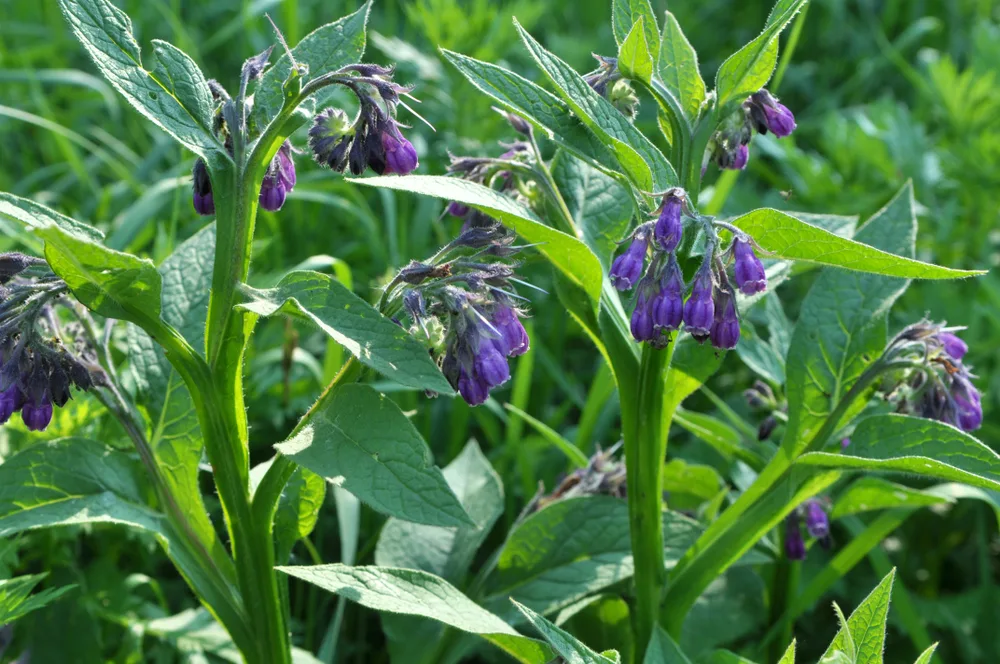
If you aren’t quite sure yet what comfrey looks like, where it grows, or why you should plant in in your garden, then you have come to the right place. The beneficial reasons for growing comfrey are coming soon, and surely one of them will whisper to you “This is the year to plant comfrey in the garden.“
In the meantime, let’s get acquainted with comfrey as a perennial plant.
The true comfrey from which poultices and salves are made from is: Symphytum officinale.
The Russian comfrey garden cultivar that you may choose to grow is: Symphytum x uplandicum
Comfrey is a cold-hardy perennial with a long tap root which makes it drought resistant. At the same time it also prefers moist, well-watered soils.
Size-wise, comfrey can reach up to 5′ in a very fertile soil and about 4′ in width. Plants will be smaller when conditions are less than ideal. Overall, they will grow just about anywhere once they are established.
As with horseradish, any roots left in the ground will keep producing new plants. So be sure to plant it where you want it, not where you don’t! And as far as it running away like mint, that won’t happen either. Once it is planted, it stays put and has no desire to take over your garden.
In the most common garden variety (Bocking 14) the comfrey seeds are sterile, meaning that it will not self-seed. Just like with rhubarb, if you would like to propagate more comfrey plants, this can be accomplished by root division every 3-4 years.
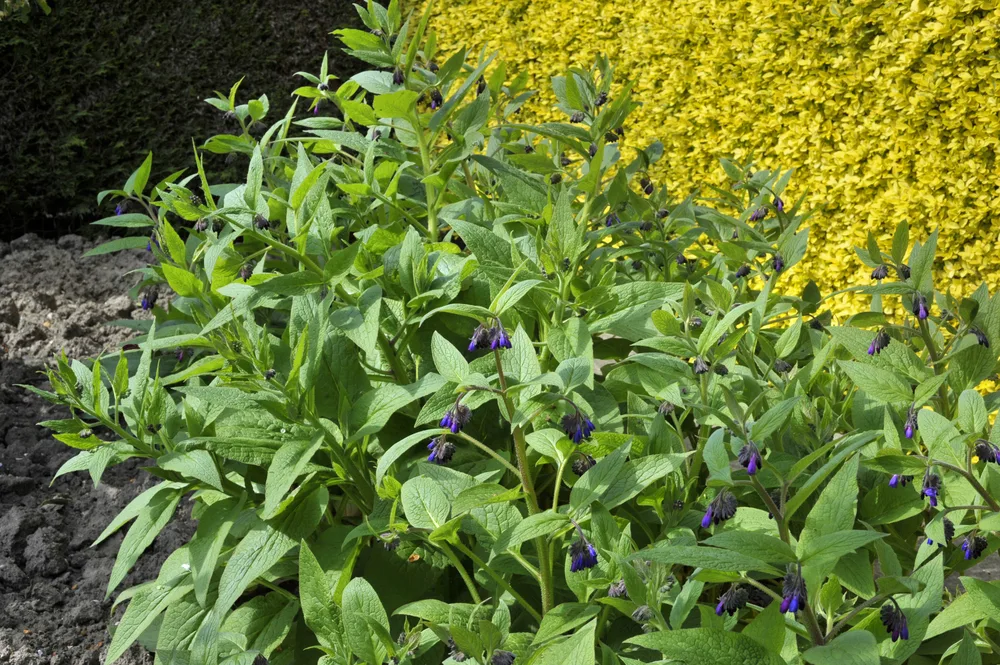
What makes comfrey so valuable to gardeners?
As we’ve just mentioned, comfrey has a strong tap root. In ideal conditions it goes 6-9 feet (2-3 meters) into the soil! Not only does this loosen up the soil down below, it also has the tendency to bring up essential nutrients that are hidden deep below the surface.
It brings up those nutrients in a way that only plants can do, without tilling or damaging the soil structure, and it stores them in the leaves. Naturally, this can become your garden fertilizer, compost and mulch.
Given that comfrey grows exceedingly fast in hardiness zones 3-9, the leaves can be harvested every 5-6 weeks and applied as often as your garden plants need it.
But – and there is always a but -, although comfrey is great for your garden and it can also be a wonderful aid for healing sprains and bruises, it needs to be used with caution as a medicinal plant due to the pyrrolizidine alkaloids that can cause liver and lung damage at high doses.
That being said, other animals can safely consume comfrey as a livestock feed. Sheep and pigs will go for it, as will chickens peck at it in smaller amounts. Both cattle and rabbits will eat the comfrey leaves when chopped and wilted, or dried and added to hay as a supplement.
One thing you will notice upon growing comfrey, is that the leaves have tiny hairs, just like its cousin borage. Be sure to wear gloves when handling either of them.
When to harvest comfrey?
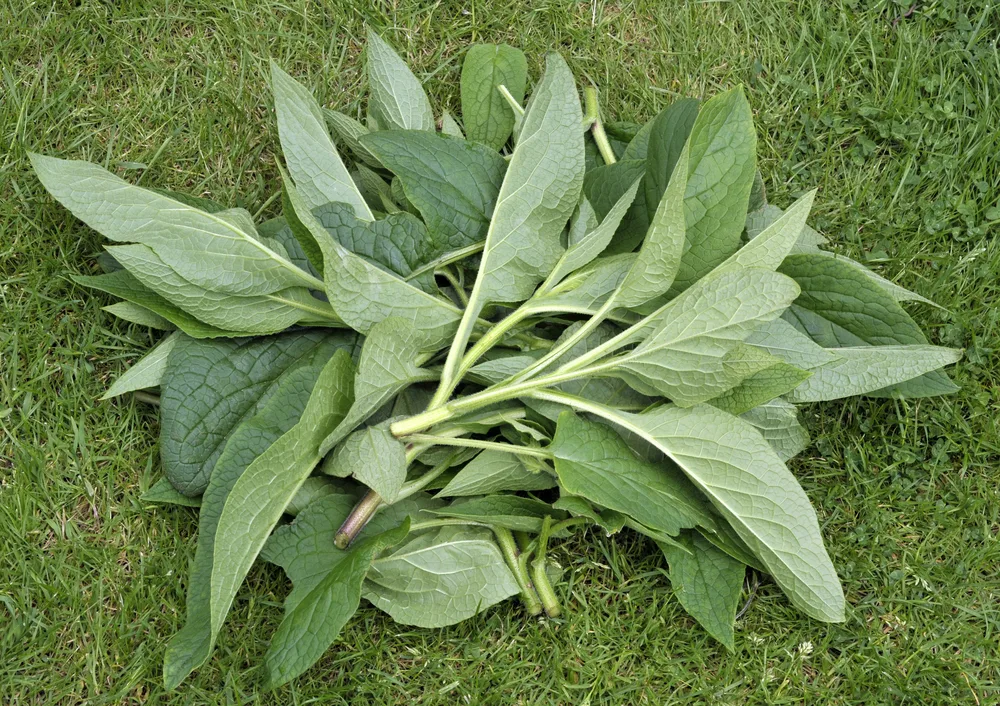
One last thing before you plant your comfrey seeds, or root cuttings, is knowing when to harvest.
Refrain from cutting until your comfrey plants are about 2 feet tall. Take as much as you need with pruners or a scythe, then let the plants regrow and revitalize themselves again before taking more foliage. Again, like rhubarb, the plants will die back completely in the winter months, only to make a strong comeback in spring. Ready to use again, season after season.
How’s that for an organic fertilizer that grows naturally in your garden?
1. Comfrey as a liquid fertilizer
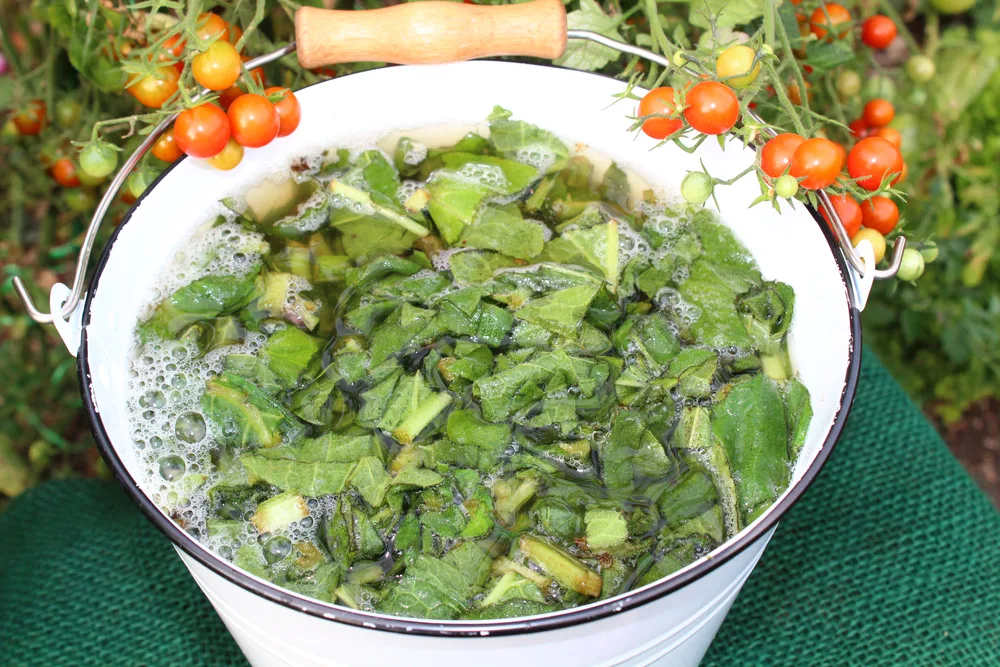
This is the moment you have been waiting for. To find out what value comfrey gives to you and your garden.
Well, the shorter answer is that the first and perhaps most important benefit is that comfrey makes a fantastic liquid fertilizer. The longer answer is that it is a stinky brew that acts like rocket fuel for your plants.
And once you know how to grow this dynamic accumulator, it is fertilizer for free, forever.
Comfrey fertilizer is rich in both nitrogen and potassium. As such, it can help your tomatoes, peppers, cucumber and berries produce abundant harvests.
To make comfrey liquid fertilizer, harvest your comfrey leaves and chop them up as small as possible. Add the chopped comfrey to a container that has a lid (the brew stinks and you’ll definitely want to contain that smell) such as a five gallon bucket. Cover with water, put the lid on and allow to infuse for 4-6 weeks. Strain out the leaves, dilute the final liquid with water at a ratio of 10 parts water to one part comfrey liquid. Water your plants with the diluted mix.
Here’s out total guide to making and using comfrey liquid fertilizer.
2. Using comfrey as a mulch
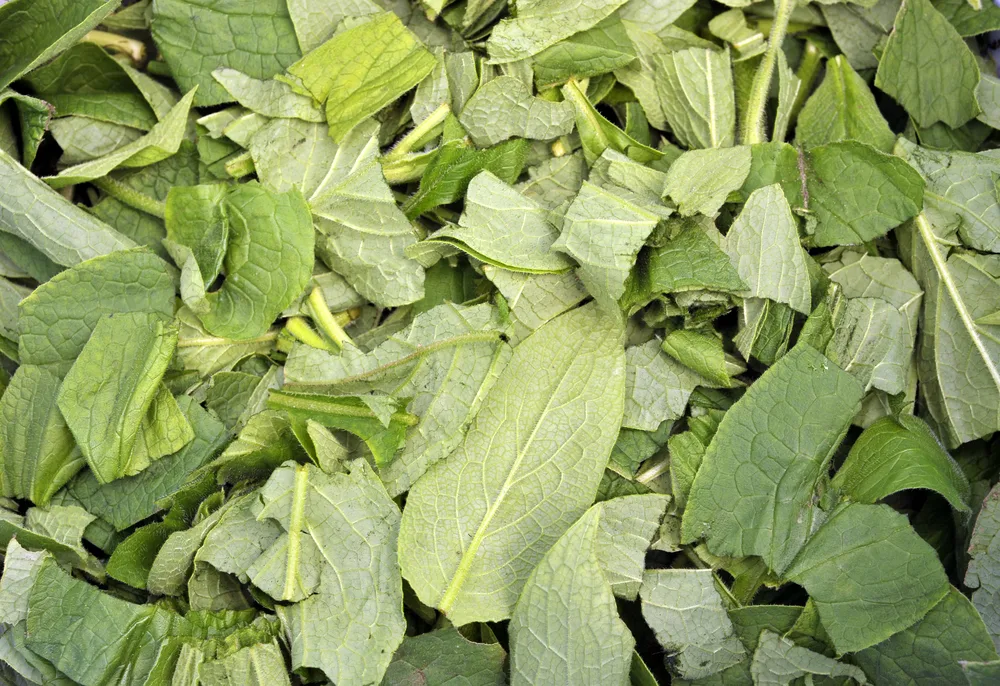
If you practice permaculture principles in your garden, likely you have already come across the method of using comfrey as a nourishing source of mulch.
This can be done one of two ways: growing comfrey directly in the ground, near fruit trees for example. Or simply grown in a “comfrey patch” to be harvested as mulch when necessary.
Comfrey leaves can be chopped up into smaller pieces and strewn on top of the soil, wherever mulch is needed. On top of this you can spread an additional layer of hay, straw or green grass clippings to prevent light from hitting the soil – at the same time suppressing the growth of weeds. In this way, the chopped comfrey leaves also become a natural fertilizer as they slowly decompose into the soil.
3. Comfrey as a forage plant
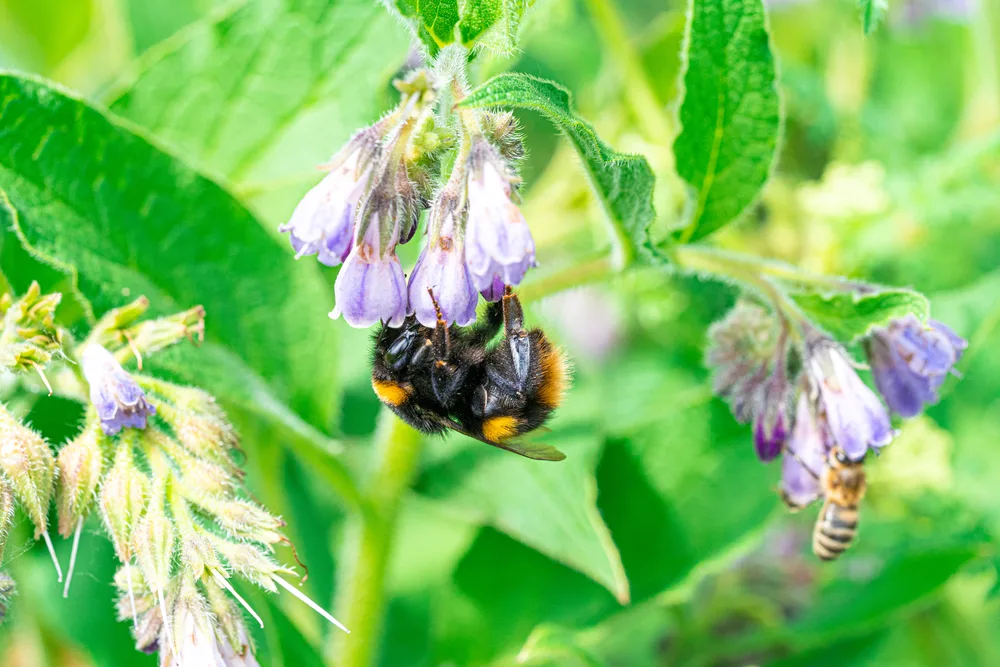
While some animals may come and chew a few leaves, they are smart enough to know that it is not a complete foodstuff and would never choose to decimate an entire patch of comfrey in one sitting.
Comfrey flowers, however, attract a different class of hard-working insects. Namely honeybees and bumblebees. So, if you are a beekeeper, or just a gardener keen on rewilidng your backyard, know that growing comfrey can help more than just the soil. It can tap into (re)creating an entire ecosystem with healthier habits and more nutritious pollen and nectar for all creatures to eat.
4. Add comfrey to your compost
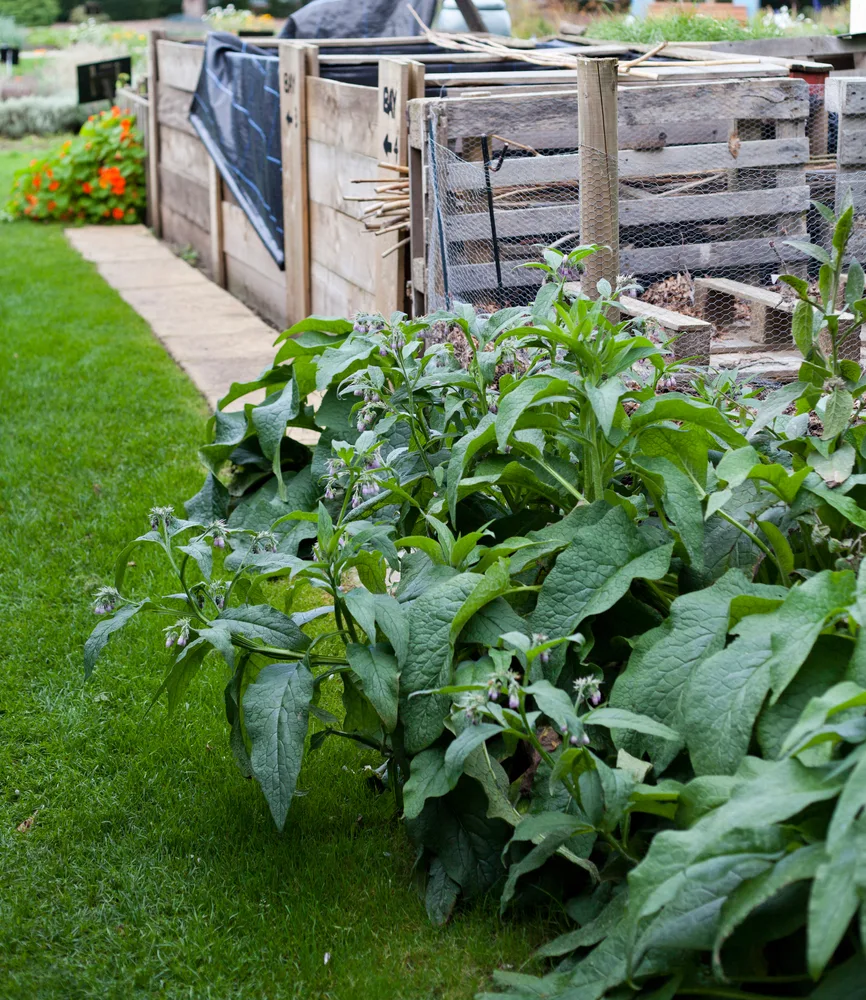
Why add comfrey to your compost? Well, for starters, it bulks up your compost with organic material that is rich in nitrogen. This in turn, results in an increase in microbial decomposition. In essence, it gives a boost to your compost pile which might otherwise be sluggish.
Careful though! Add too much comfrey and you may slow the decomposition rate.
Just as when you use comfrey as mulch, when you add it to your compost you are inevitably going to enrich your soil with nitrogen, phosphorus and potassium. Go ahead and add your excess green leaves to your compost bin, your garden will thank you.
Related reading: 20 Common Composting Mistakes To Avoid
5. Plant comfrey to fill in your shady areas
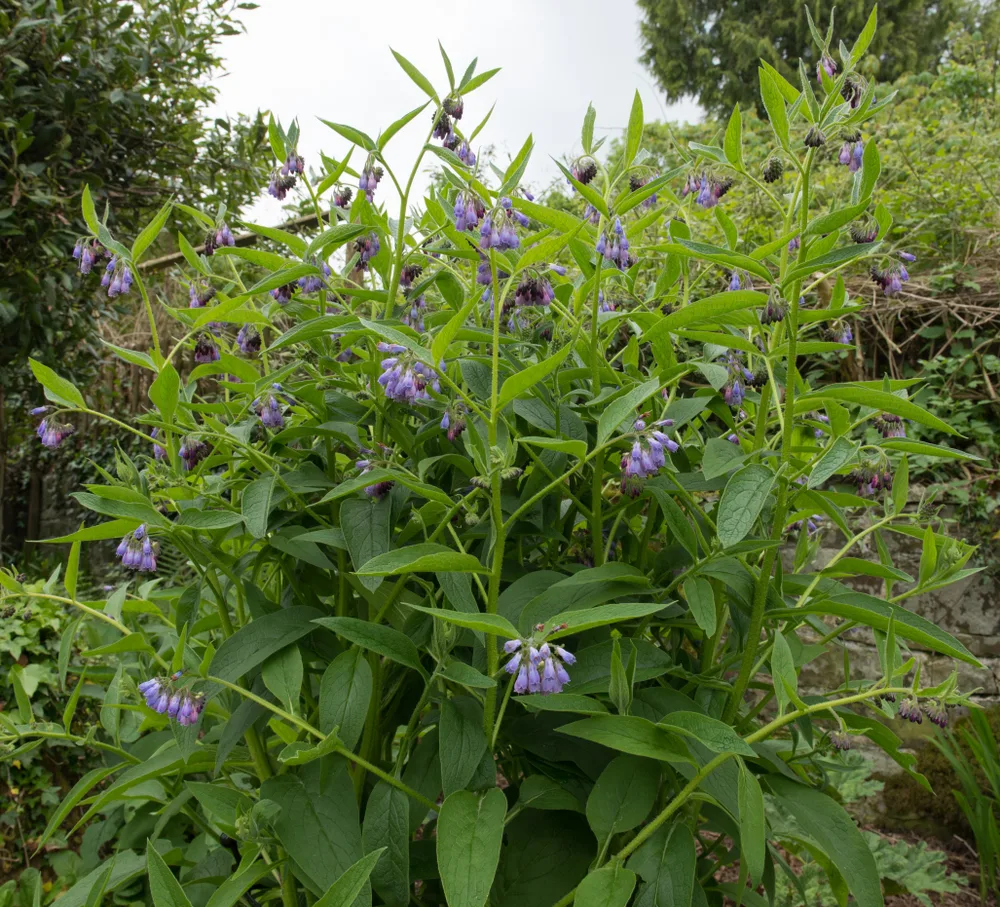
No matter how hard you try to find full sun in your garden for all your favorite sun-loving plants, there will always be shade. Shade from tall trees, shade from the neighbor’s house, or your very own.
Rather than be disappointed by shade, try to embrace it. Then find the shade-tolerant plants that can handle it, if not downright enjoy basking in some sunless light.
Luckily comfrey is one of those easy-going plants that can handle full sun or partial shade. Combine that with its fertilizing capabilities and you have a victorious situation on your hands. You can easily harvest in the shade, as you make a top-notch fertilizer for your award-winning, sun-loving tomatoes. Or something like that.
In this way, comfrey is a terrific plant to incorporate into forest gardens, as it can be planted among trees and along edges.
6. Make a comfrey tea for houseplants
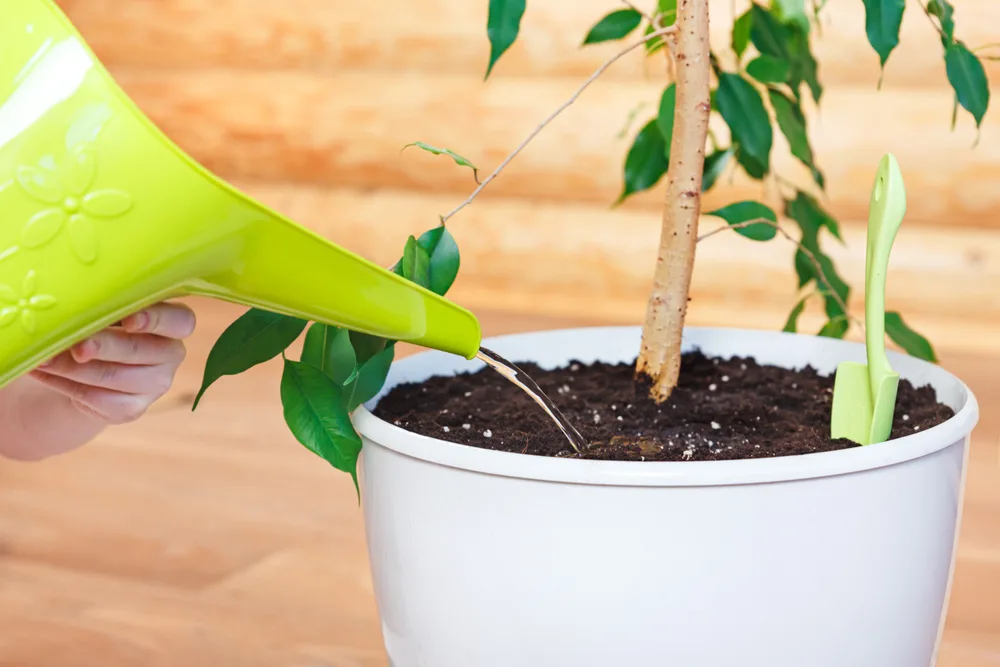
You already know how your potatoes, tomatoes and peppers can benefit from comfrey as an organic fertilizer. How about your beloved houseplants?
They also need some extra nurturing from time to time too. Rather than change the soil too often (which disturbs the roots to some extent) you can also make a fertilizer of compost tea to use indoors.
If you are able to dry some comfrey leaves (as you would dry any fresh herbs at home) during the summer months, you can then soak them in winter when your houseplants need a little extra nutrition. Let the comfrey leaves sit in pure water for a few days, strain, then water your plants as usual.
Be careful to keep your comfrey leaves labeled and separate from your other herbs, so that you don’t accidentally end up putting them in your herbal tea!
7. Comfrey as a natural medicine
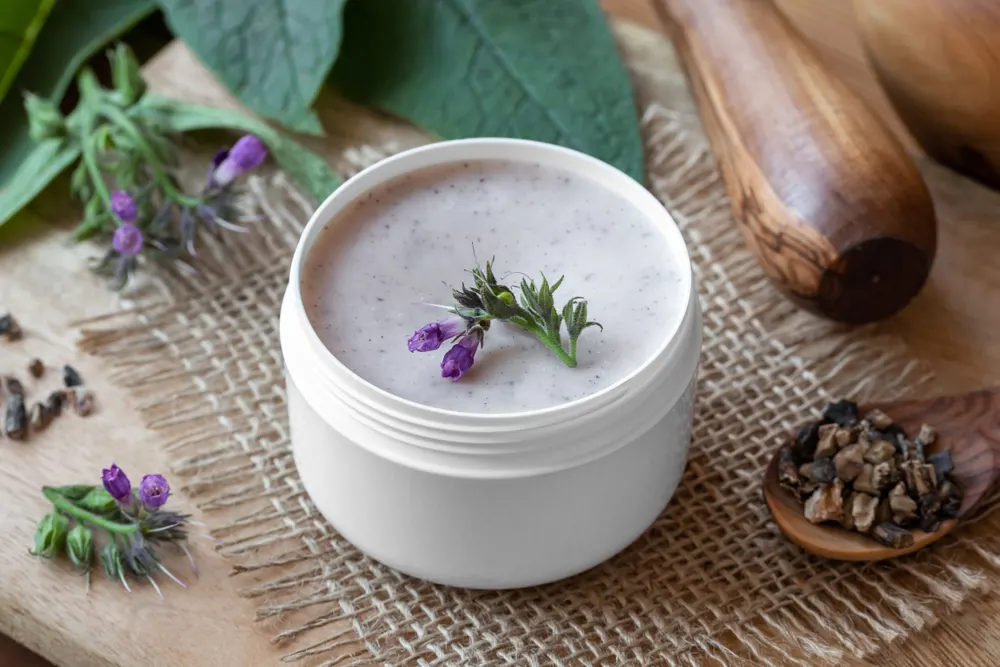
Have you ever had a sprain that felt like it took too long to heal? Or a bruise that was overly sensitive to touch? If you have comfrey growing in your garden, then a healing comfrey poultice is not so far away!
In summer you can make a healing remedy from fresh leaves, but for winter injuries, you better have a salve already made or some dried leaves and roots at the ready.
Every summer we make an infused comfrey oil for the extremely random and unexpected times it may be needed throughout the year. It is always best to be prepared!
Comfrey can also be used to make a healing salve or cream for external use to reduce inflammation and pain, at the same time to speed the healing of skin. Note, that comfrey should never be used on open wounds. If you can’t make your own, or don’t dare to try it just yet, you can always search for and find a handmade comfrey salve online. Just be sure to buy from a reputable source.
Once you have a patch of comfrey growing contentedly in the garden, you might as well grow some beautiful borage too! Not that you need another plant…

Get the famous Rural Sprout newsletter delivered to your inbox.
Including Sunday musings from our editor, Tracey, as well as “What’s Up Wednesday” our roundup of what’s in season and new article updates and alerts.

